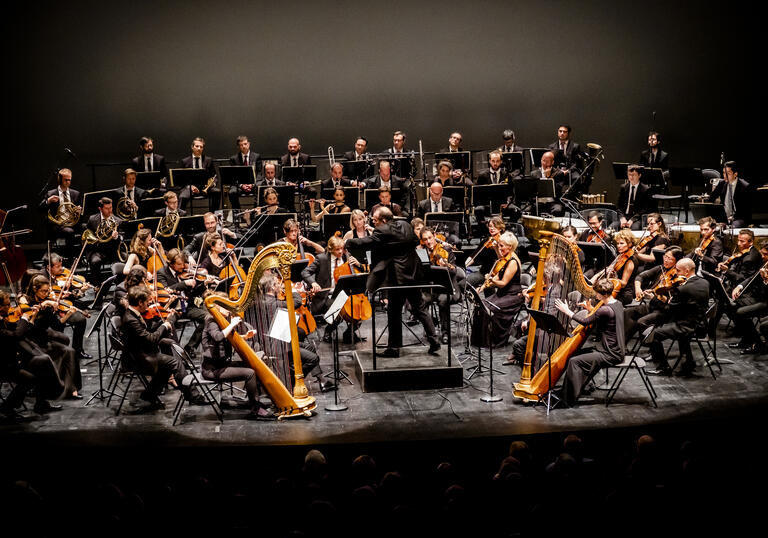
Programme and performers
Claude Debussy Prélude à l’après-midi d’un faune
Carl Maria von Weber (orch Hector Berlioz) Invitation to the Dance
Lili Boulanger D’un soir triste
Maurice Ravel Daphnis et Chloé
Part 1
Introduction
Danse religieuse
Vif – Danse générale
Danse grotesque de Dorcon – Scène
Danse légère et gracieuse de Daphnis
Lent [devant le groupe radieux que forment Daphnis et Chloé enlacés]
Danse de Lycéion
Scène [Les Pirates]
Nocturne [Une lumière irréelle enveloppe le paysage]
Danse lente et mystérieuse des Nymphes
Interlude
Part 2
Introduction – Danse guerrière
Danse suppliante de Chloé
Lent [Soudain l’atmosphère semble chargée d’éléments insolites]
Part 3
Lever du jour – Scène
Pantomime [Daphnis & Chloé miment l’aventure de Pan et de Syrinx]
Très lent [Chloé figure par sa danse les accents de la flûte]
Chloé tombe dans les bras de Daphnis
Animé – Danse Générale
Les Siècles
François-Xavier Roth conductor
London Symphony Chorus
Artist biographies
Les Siècles is a pioneering Paris-based orchestra, founded in 2003 by conductor François-Xavier Roth. Its musicians perform works using instruments specific to the era of their composition, putting several centuries of musical creation into perspective in unexpected ways.
The ensemble is a trailblazer in historical performance from the 19th and 20th centuries, shining a new light on both much loved and unfamiliar repertoire. Tonight’s concert is part of a European tour celebrating the orchestra’s 20th anniversary, with programmes paying homage to its origin and ethos.
Les Siècles is in residency at Théâtre des Champs-Élysées in Paris and the Atelier Lyrique de Tourcoing and has established series at venues throughout the Hauts-de-France region. It is the associate orchestra of the Berlioz Festival in La Côte Saint-André, the Theatre de Nîmes and the Musicales de Normandie Festival. Its innovative approach and imaginative programming have led to frequent international tours; it is a frequent visitor to the UK, where its performances at the BBC Proms, Aldeburgh and Edinburgh festivals have been met with great acclaim.
Since 2018 Les Siècles has recorded for Harmonia Mundi. It is in the process of releasing the complete orchestral music of Berlioz, Ravel and Debussy, and is beginning a new cycle dedicated to Mahler and the Second Viennese School. Les Siècles also made the premiere recordings of Saint-Saëns’s Le Timbre d’argent, Félicien David’s Christophe Colomb and Dukas’s cantata Velléda. Its wide-ranging discography has received a number of prestigious awards, including the Deutsche Schallplattenkritik and the Edison Klassiek prizes. It also recently garnered Gramophone magazine’s coveted Classical Recording of the Year Award for Daphnis et Chloé.
The musicians of Les Siècles regularly share their passion for classical music through activities in schools, hospitals and prisons. The orchestra is a partner of the L’Aisne Youth Symphony Orchestra, the Hector Berlioz Youth European Orchestra and the DEMOS project in Picardy and Île-de-France. It has also created a ‘Music in the Hospital’ project in partnership with the Trousseau and Beauvais Hospitals.
François-Xavier Roth and Les Siècles also devised Presto!, their own television series for France 2, attracting weekly audiences of over three million viewers.
This concert is supported by the Institut Français in Paris and the Lille European Metropolis. Société Générale’s ‘C’est vous l’avenir’ foundation is the orchestra’s main sponsor, and the concerts of the 2022–23 season are given with the generous support of Aline Foriel-Destezet. The orchestra is toured in the UK by Maestro Arts Ltd.
